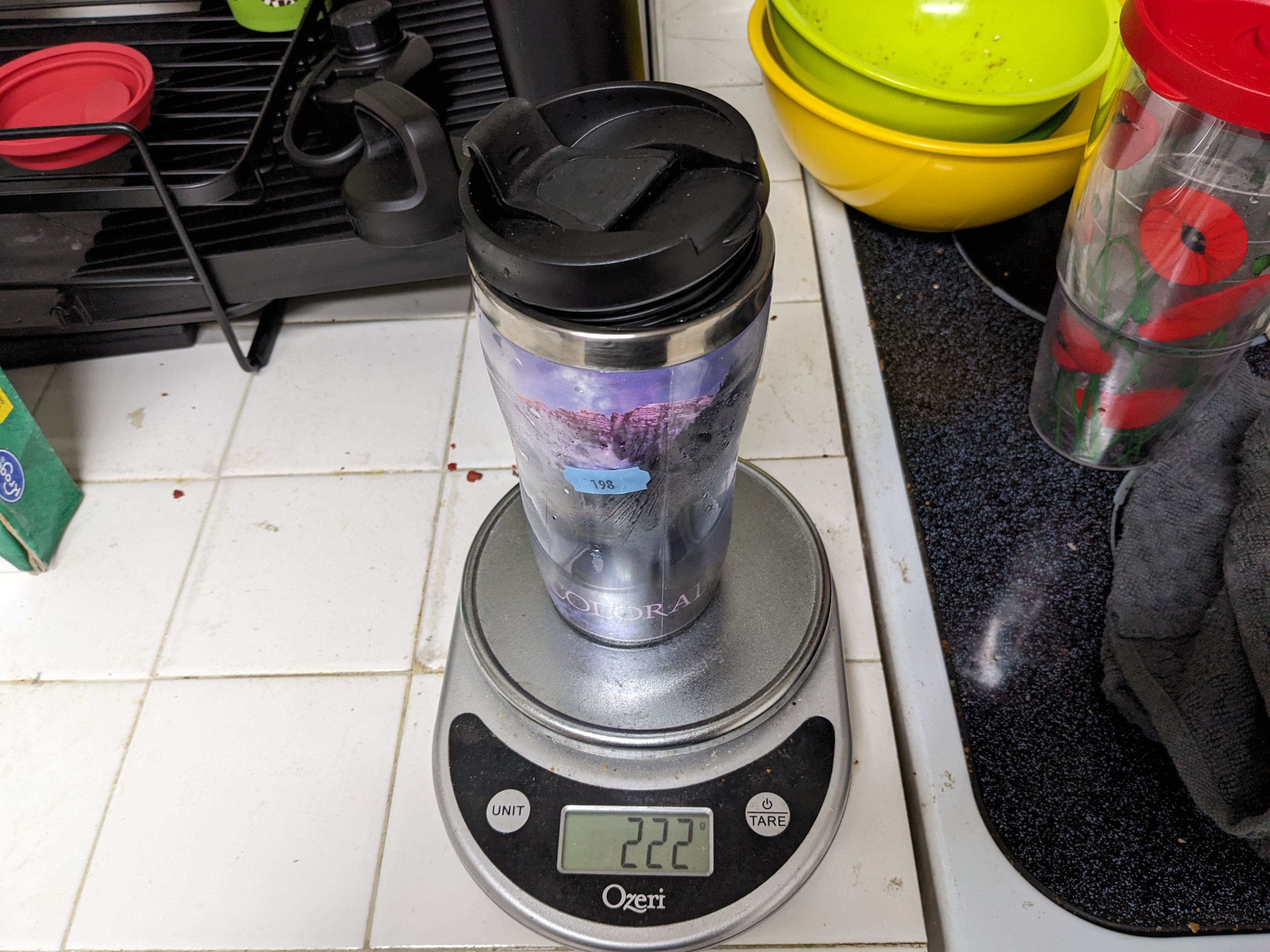Remember in school when you got into groups and did science experiments? Where the teacher demanded you perform some experiment, measure something, then repeat the experiment again, changing something? Well if you thought you'd never need to apply that in your life ... you're actually probably right. But I applied it in mine, so lets do some science!
The experiment: which of these cups insulate the best?
The setup
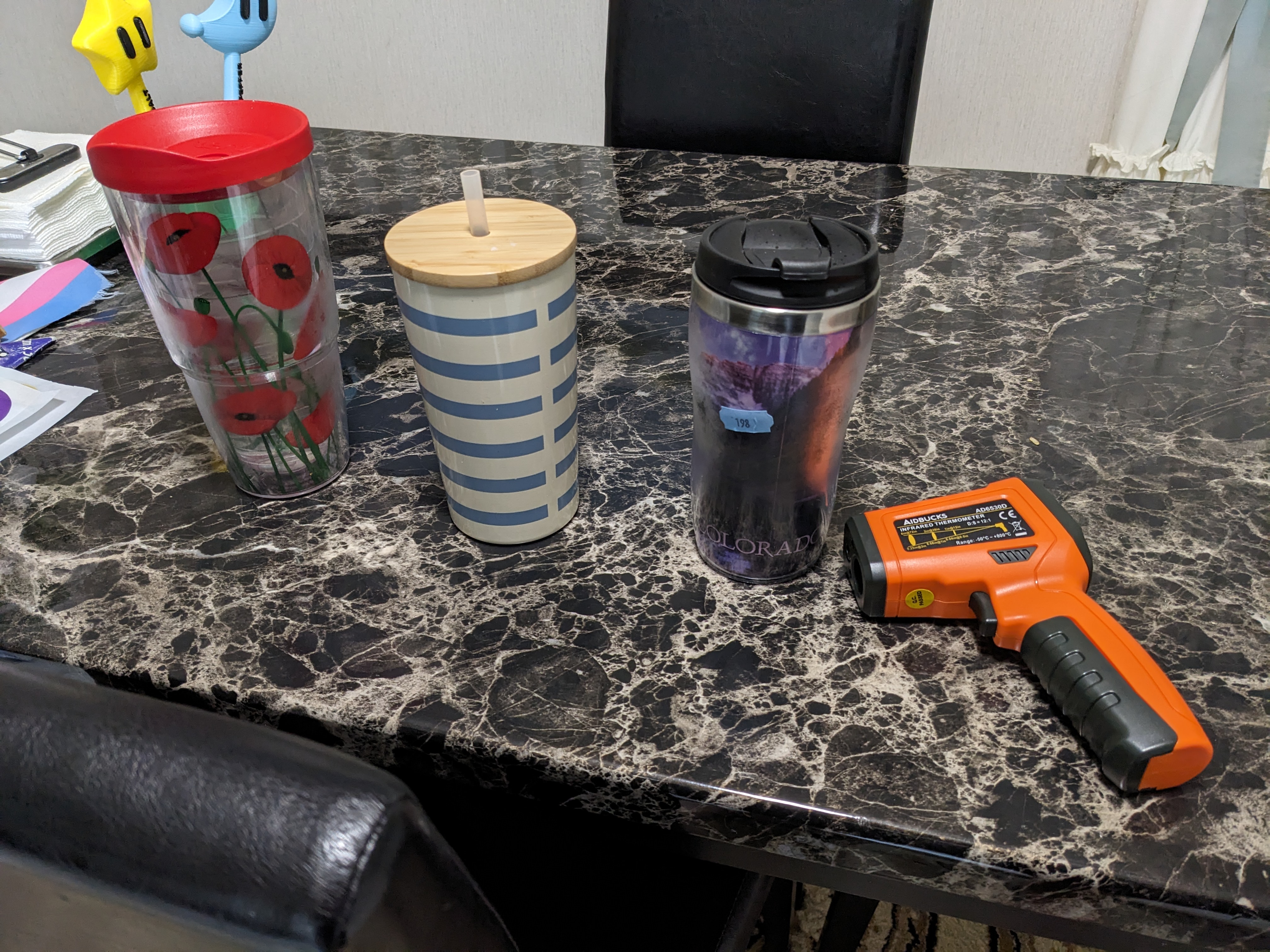
Inventory:
- 1 clear plastic tumbler with plastic sealable top (referred to as Subject 1)
- 1 metal tumbler with wood-grain top and straw (referred to as Subject 2)
- 1 plastic tumbler with plastic sealable screw-on top (referred to as Subject 3)
- 1 handheld infra-red thermometer
My hypotheses
My hypothesis was purely speculative for Subject 2 and 3 as I only purchased them today. Because I had used Subject 1 before, I was moderately familiar about its insulation properties. Here were my hypotheses:
- Subject 3 should be the most insulating. The inside is metal, the top screws on and I knew from experience that Subject 1 gets condensation on the outside when holding cold drinks, an indicator that it does not insulate as well as it could.
- Subject 2 might be about as good as Subject 1, but I suspect it will be worse. It is all metal, which is a plus for insulating on the inside, but the outside seems to be the same metal just coated with epoxy of some sort. I did not have high expectations that the epoxy would be very insulating. In addition, I think the straw, which made this the only cup without being fully airtight, will have a negative effect on it's insulating properties
- Subject 1 is a good benchmark - it doesn't sweat bad enough to bead up which is a good lower threshold for how efficient an acceptable cup would be.
My experimental process
- Fill the cup with 15 ice cubes
- Fill the cup with 10 seconds of water from the fridge (I could have measured the volume but since the flow-rate is not very fast, I was pretty confident I could get close to the same amount of liquid in each cup)
- Place the cups in the same area
- Wait some time (I ended up waiting 3 hours, which turned out to be better than my original plan of 4)
- Measure the temperature of the outside of the cup (if it is lower, then the cup is a poorer insulator. If it is higher, then it is a better insulator - or it is no longer cold enough to have an appreciable differential between the inside and outside of the cup)
- Visually inspect the ice to determine how much ice is left
Results
The top number on the thermometer display is ambient temperature
Subject 1
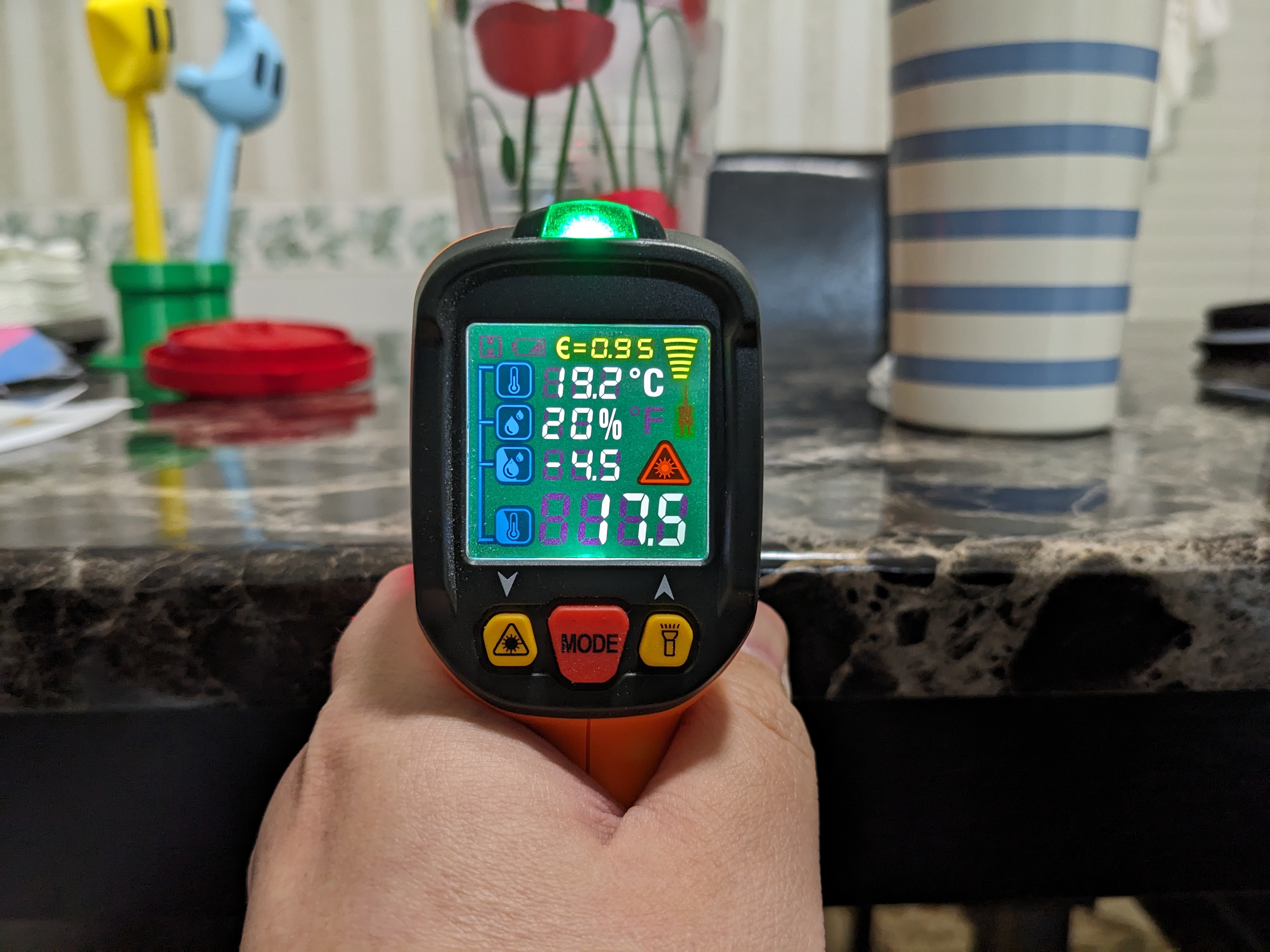
Subject 1 measured 17.5°C, and had noticeable condensation.
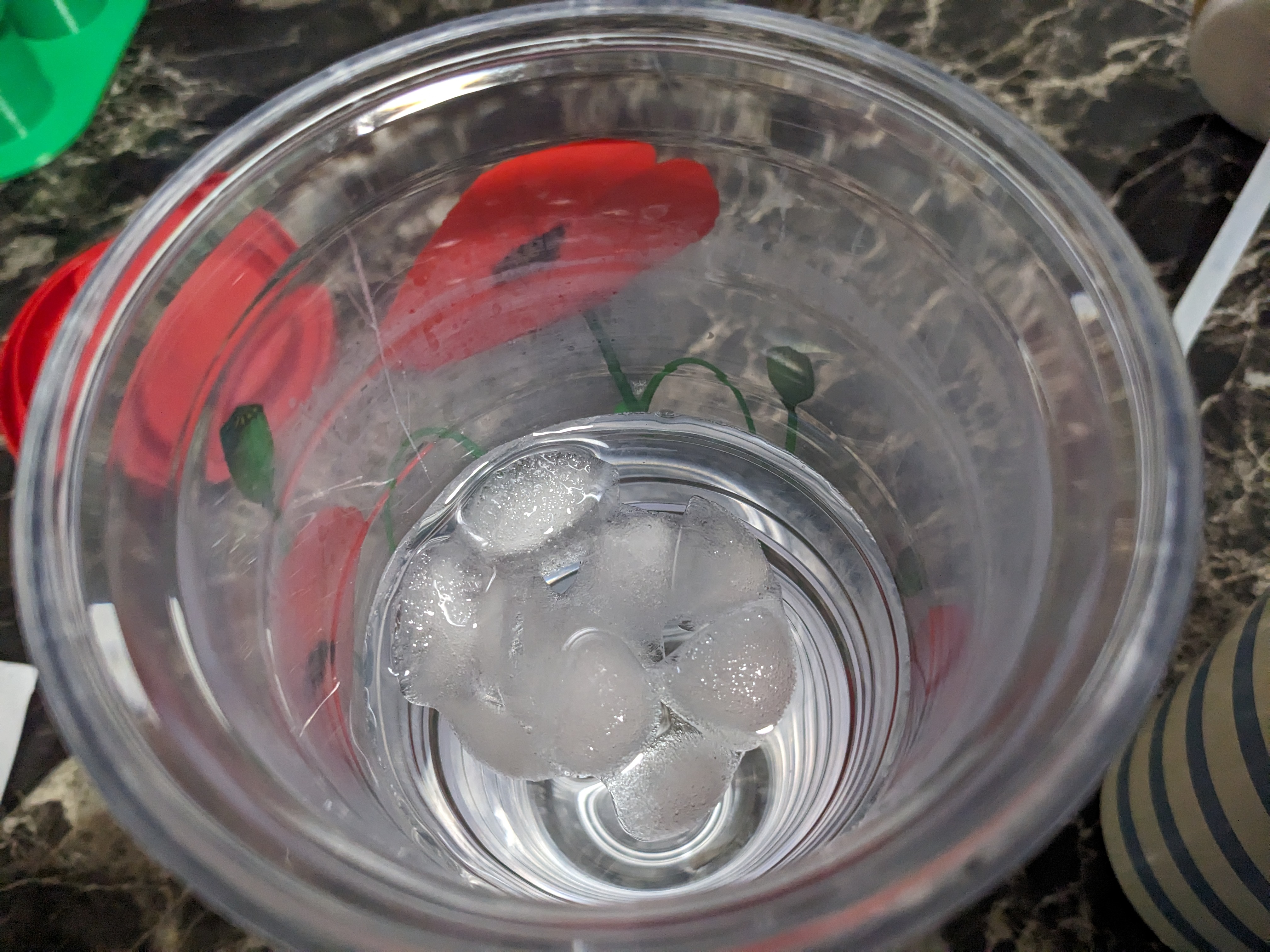
Subject 1 had a small cluster of ice.
Subject 2
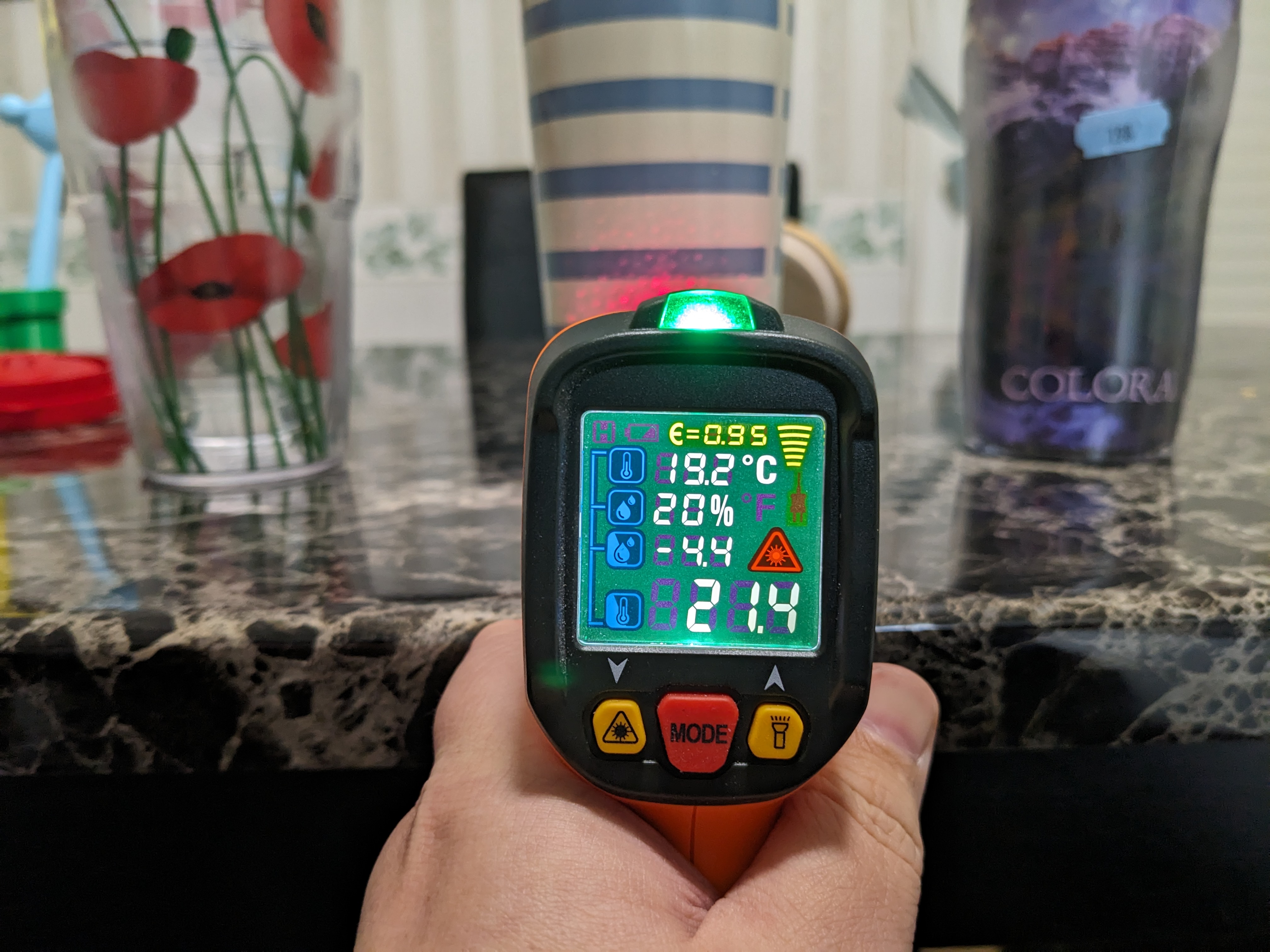
Subject 2 measured 21.4°C and did not have any condensation (the dots in the picture are from the laser pattern of the thermometer).
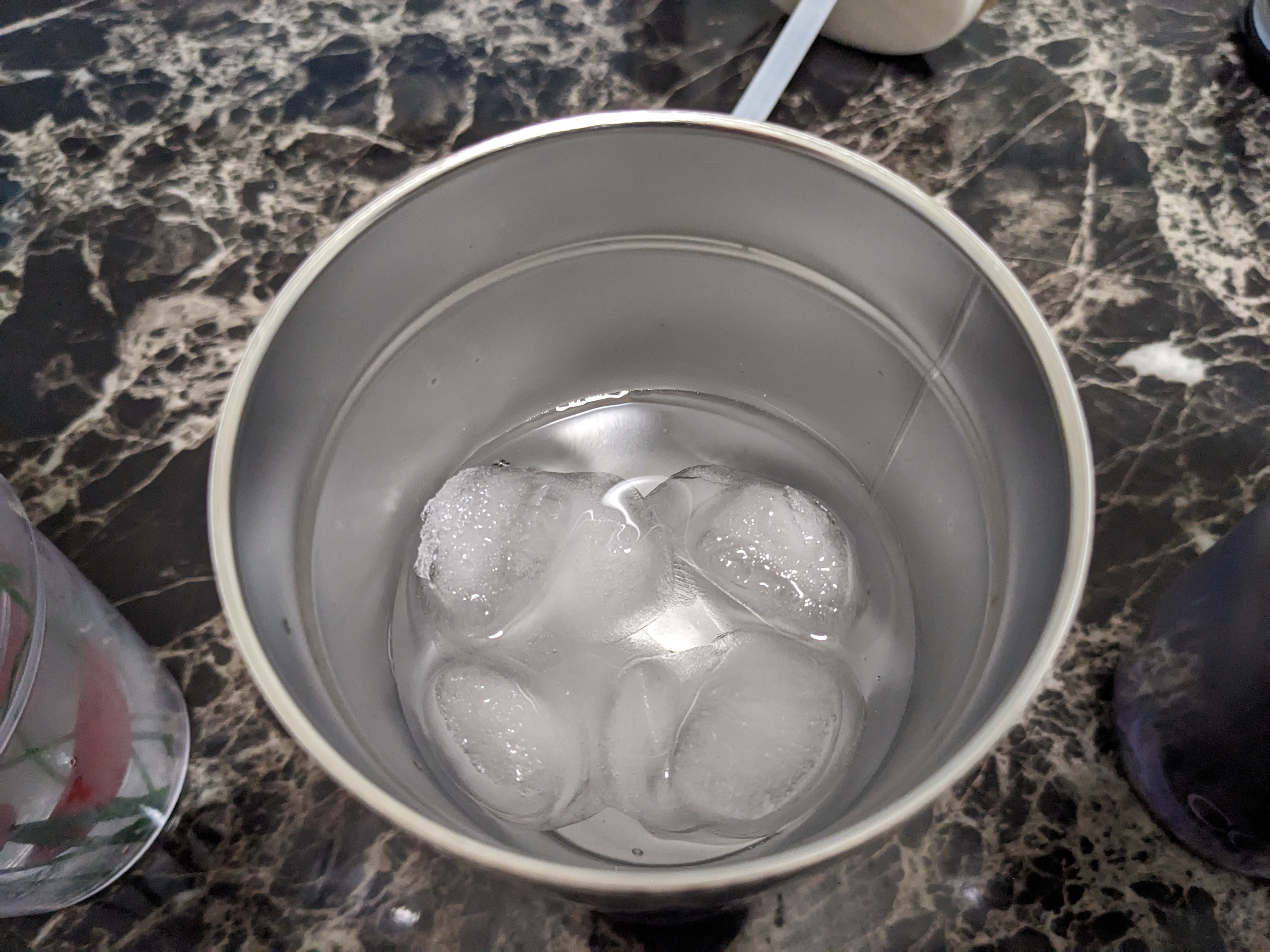
Subject 2 had a medium cluster of partially white ice.
Subject 3
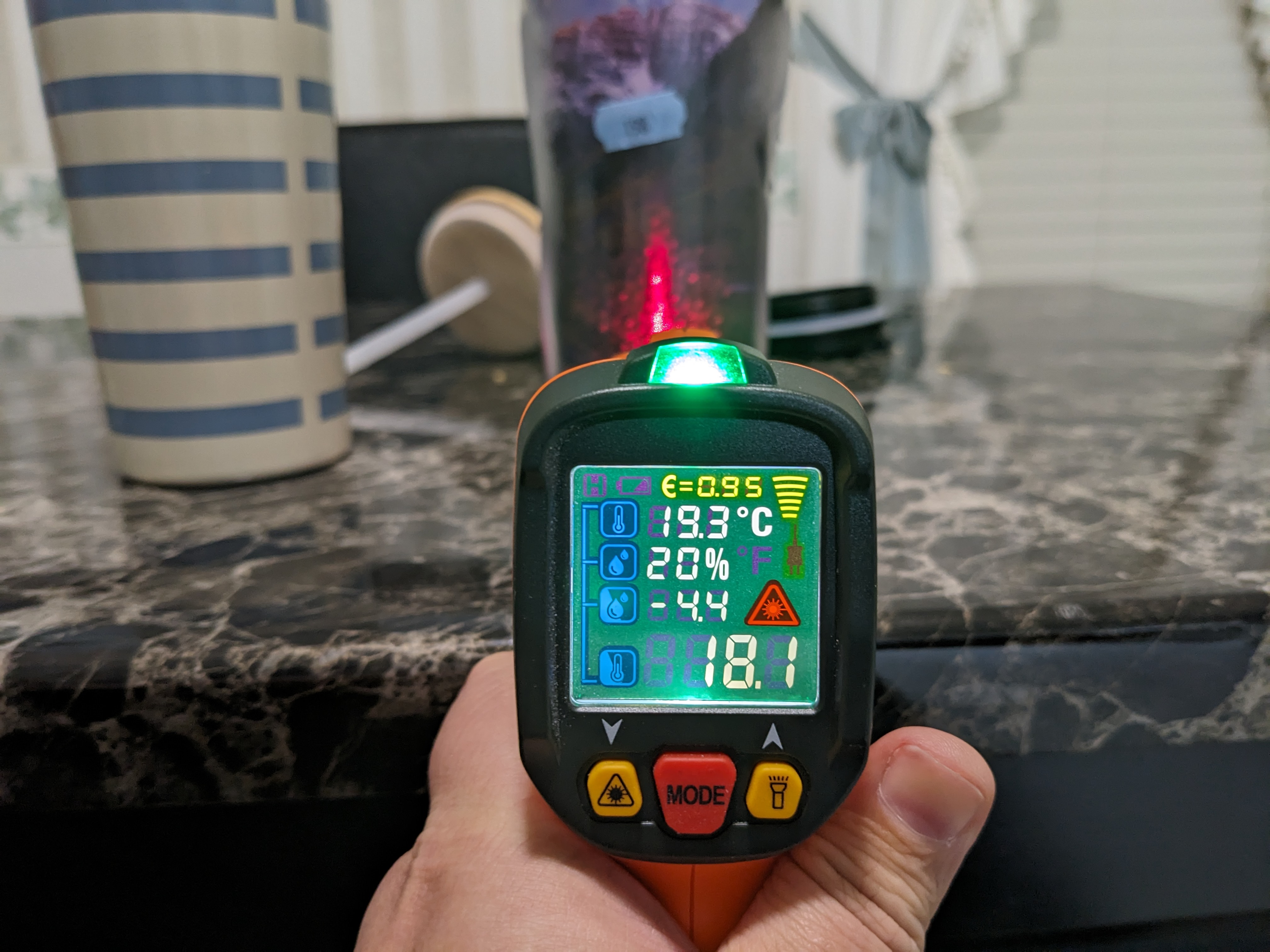
Subject 3 measured 18.1°C and had noticeable but light condensation
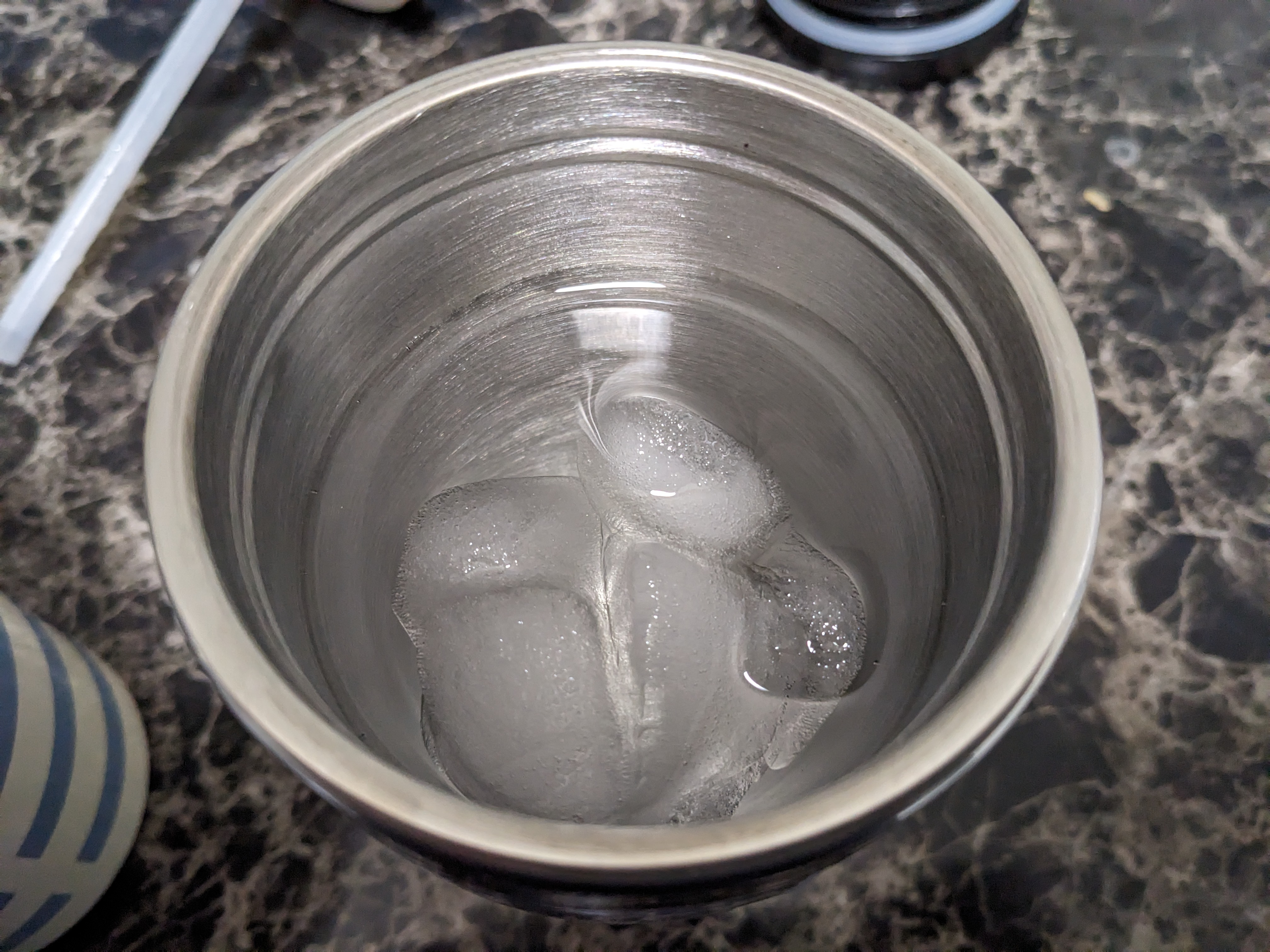
Subject 3 had a medium cluster of mostly clear ice.
Remarks
My expectations were different than the results. As it turns out, Subject 2 (the white and blue tumbler with a straw) was the most insulating, as evidenced by the measurement of the temperature of the cup and by visual inspection of the ice (Between Subject 2 and Subject 3, Subject 2's ice appears to be more ice and less water judging by how much white is still left in the ice. Subject 3's ice may be close in volume but it appears to have more water content)
Considerations
This was an informal experiment, but it is still useful to consider what factors may have affected the outcome, including factors in the setup of the experiment. Since the experimental process was essentially an emulation of practical usage (put cold drink in, see how long drink stays cold), while our measurements might not be precise, the conclusions drawn should be sound.
- The cups are not the same volume - this has the effect of having a different amount of air inside the cup when filled with the same volume and sealed. Again, since we care about how the cup performs practically, this should be okay, but perhaps if filled to the brim, having less air would make a given cup perform better or worse.
- Subject 1 is transparent, so measurement with an infrared thermometer may not be reliable. A second method of measurement, such as using the physical probes that can be used with this thermometer would help mitigate this.
Further information
For fun, I also measured the cups weight
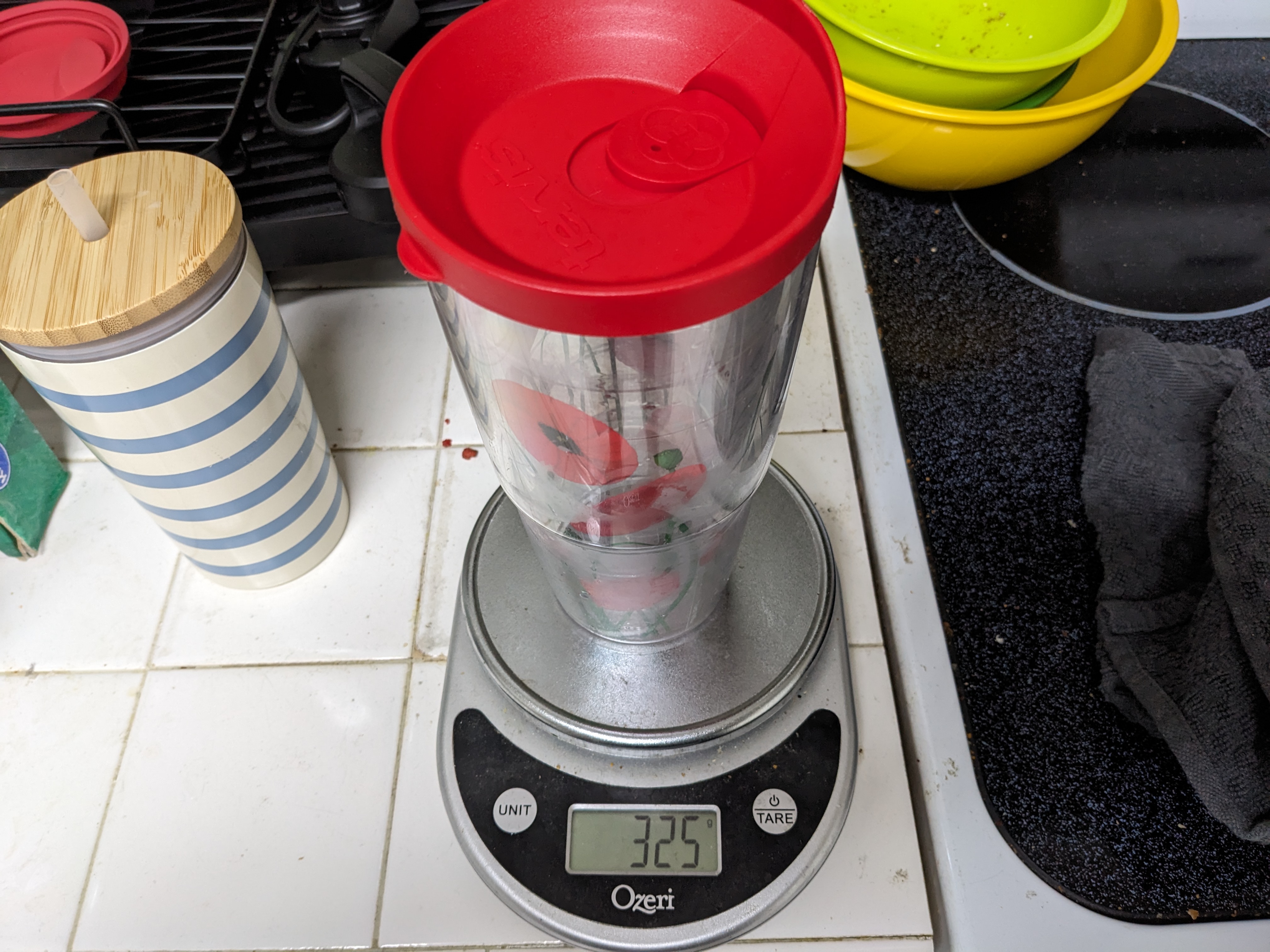
Subject 1
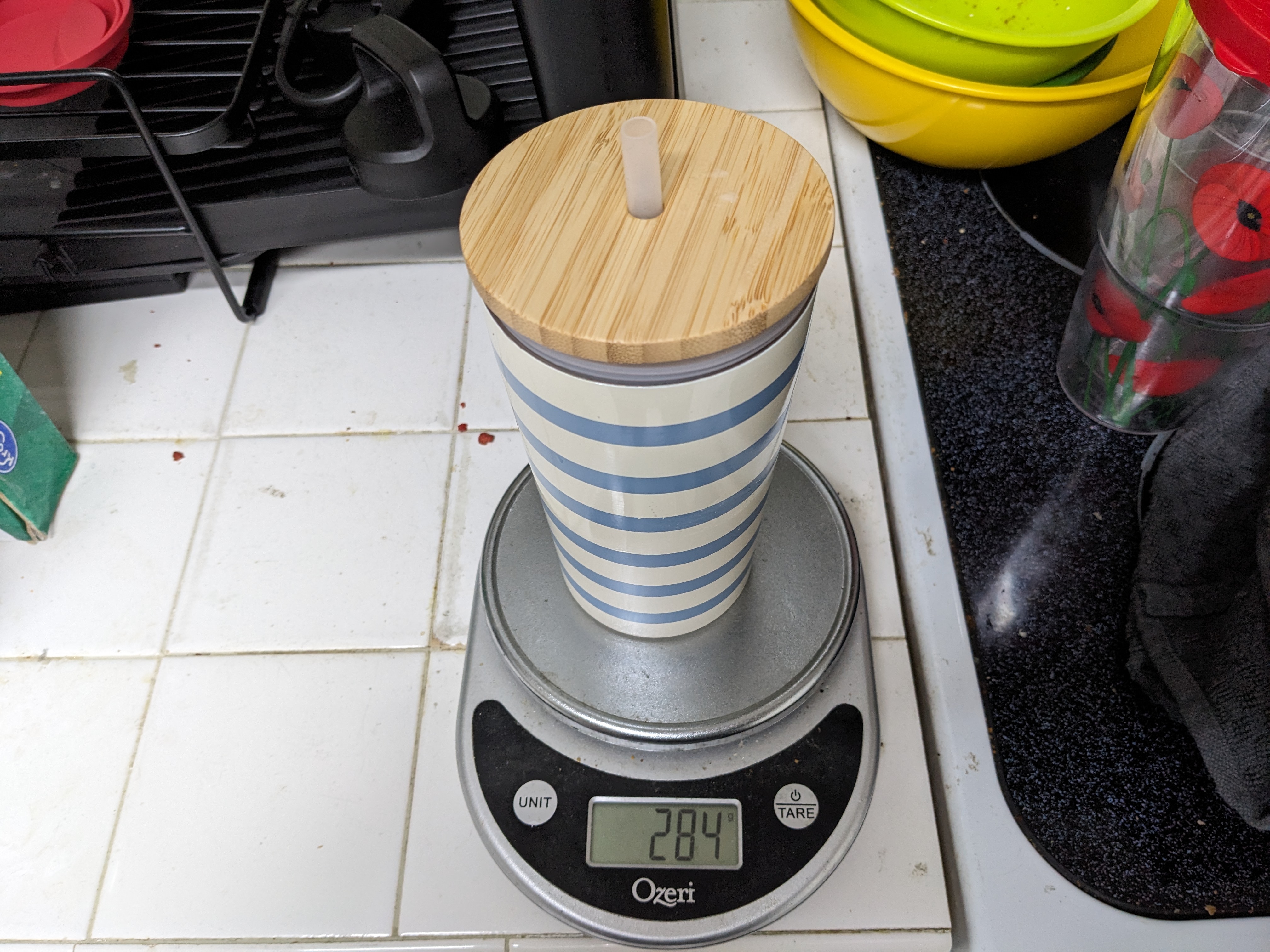
Subject 2
